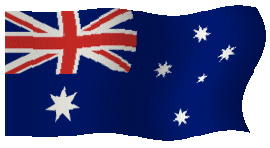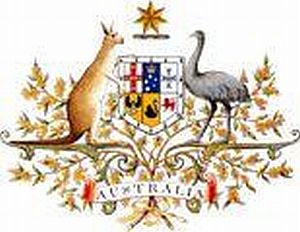Facts taken from CIA World Fact book
Aboriginal settlers arrived on the continent from Southeast Asia about 40,000 years before the first Europeans began exploration in the 17th century. No formal territorial claims were made until 1770, when Capt. James COOK took possession in the name of Great Britain. Six colonies were created in the late 18th and 19th centuries; they federated and became the Commonwealth of Australia in 1901. The new country took advantage of its natural resources to rapidly develop agricultural and manufacturing industries and to make a major contribution to the British effort in World Wars I and II. In recent decades, Australia has transformed itself into an internationally competitive, advanced market economy. It boasted one of the OECD’s fastest growing economies during the 1990s, a performance due in large part to economic reforms adopted in the 1980s. Long-term concerns include climate-change issues such as the depletion of the ozone layer and more frequent droughts, and management and conservation of coastal areas, especially the Great Barrier Reef.
Area: total: 7,741,220 sq km land: 7,682,300 sq km water: 58,920 sq km
note: includes Lord Howe Island and Macquarie Island
Area – comparative: slightly smaller than the US contiguous 48 states
Land boundaries: 0 km
Coastline: 25,760 km
Terrain: mostly low plateau with deserts; fertile plain in south-east
Elevation extremes: lowest point: Lake Eyre -15 m highest point: Mount Kosciuszko 2,229 m
Natural resources:
bauxite, coal, iron ore, copper, tin, gold, silver, uranium, nickel, tungsten, mineral sands, lead, zinc, diamonds, natural gas, petroleum
note: Australia is the world’s largest net exporter of coal accounting for 29% of global coal exports
Land use: arable land: 6.15% (includes about 27 million hectares of cultivated grassland) permanent crops: 0.04% other: 93.81% (2005)
Irrigated land: 25,450 sq km (2003)
Geography – world’s smallest continent but sixth-largest country; population concentrated along the eastern and south-eastern coasts; the invigorating sea breeze known as the “Fremantle Doctor” affects the city of Perth on the west coast and is one of the most consistent winds in the world
Population 22,062,000 (July 2011 est.)
Urbanization: urban population: 89% of total population
Life expectancy at birth:
total population: 81.63 years
male: 79.25 years
female: 84.14 years (2009 est.)
Click on links below and a PDF file will open which you can read , print or save to your computer.


